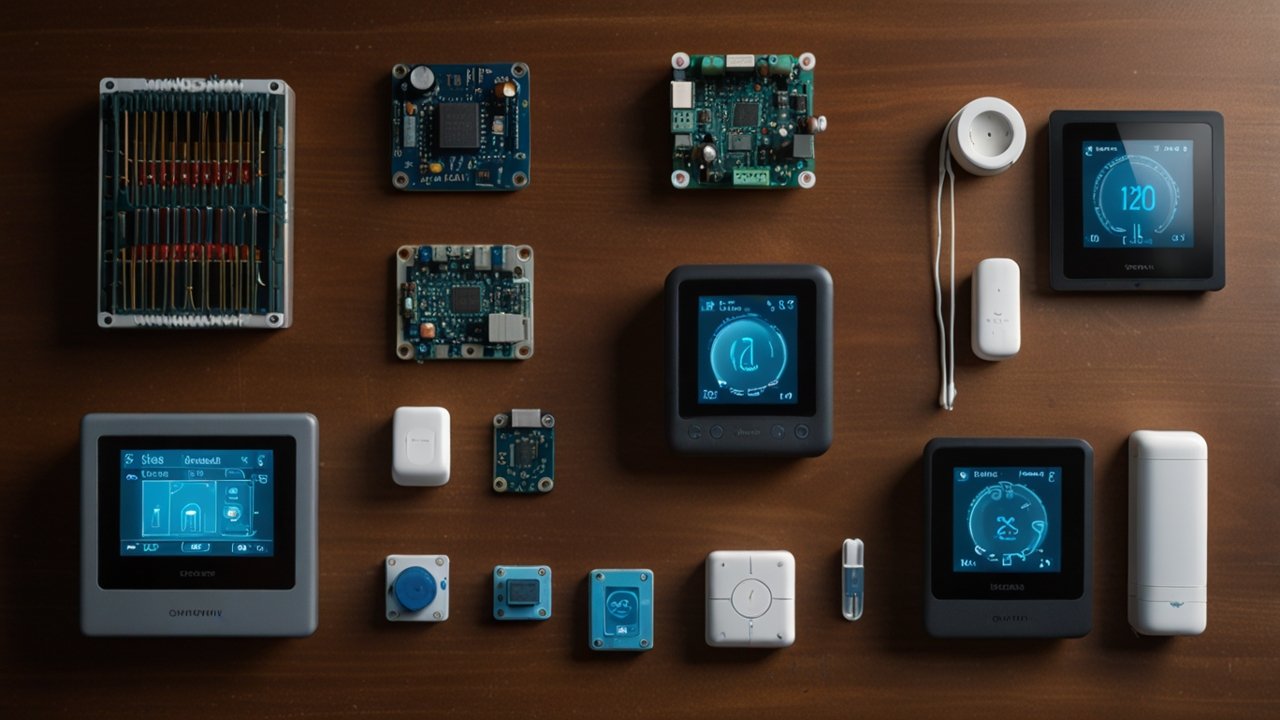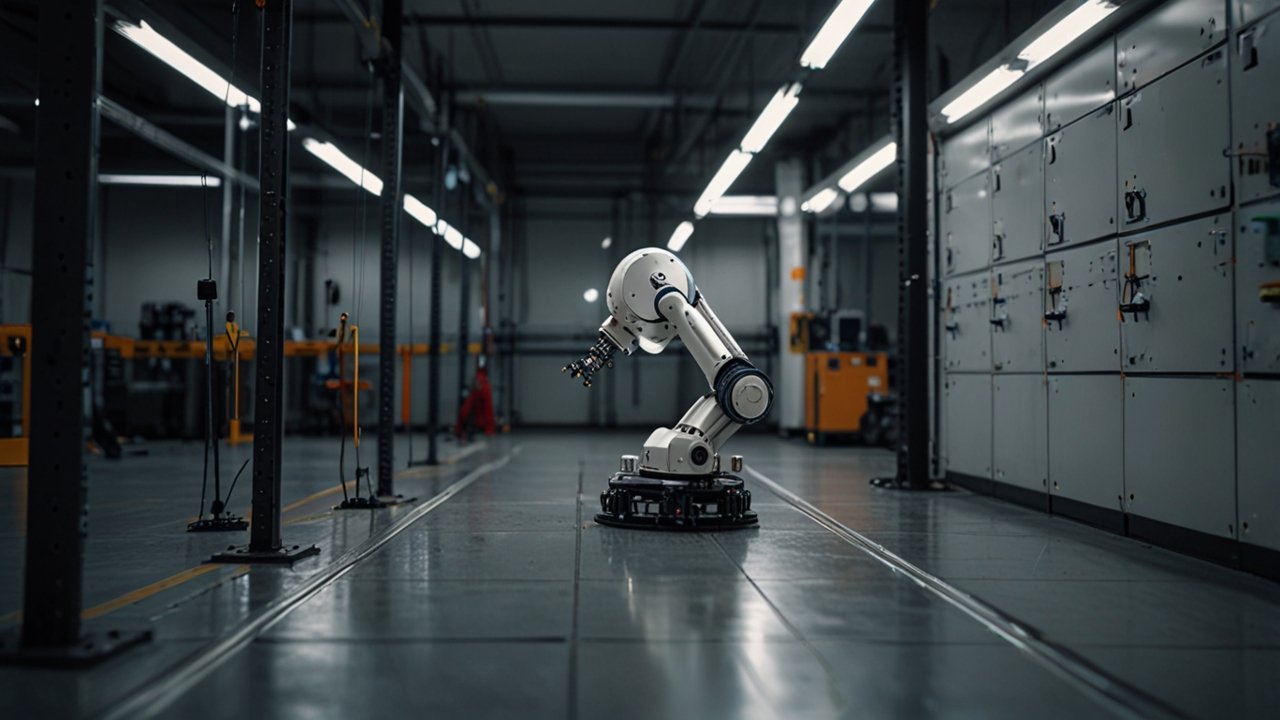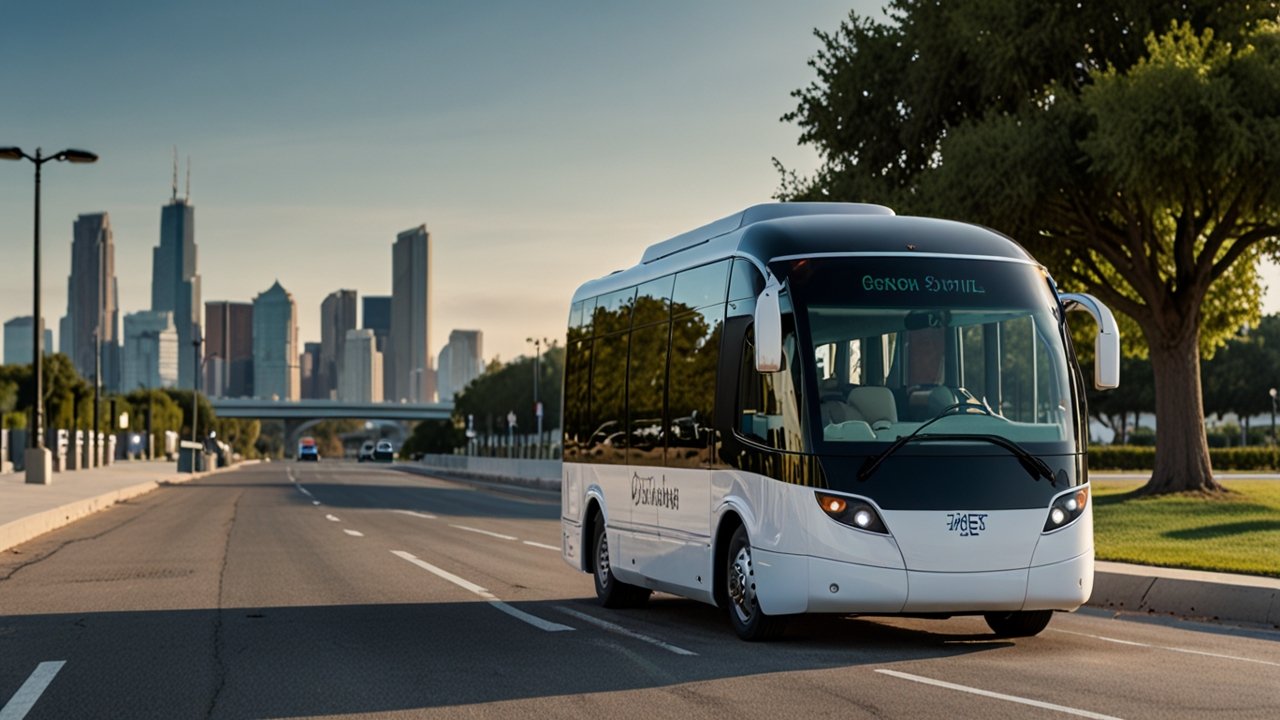Energy Harvesting Innovation 2025
Welcome to our in‐depth exploration of a transformative technology that is reshaping how we power our devices. In this article, we discuss the evolution, current state, and future prospects of energy harvesting while providing detailed case studies and real-world applications. You will learn about groundbreaking innovations, historical milestones, and the unique challenges this technology faces.
Our discussion is designed for a broad audience, with clear explanations and brief paragraphs to ensure you can easily follow complex ideas. We invite you to reflect on how these advancements may affect your everyday tech experiences. Your insights and comments are always welcome!
Let’s dive into the world of energy innovation and discover the art of capturing power from our surroundings.
📑 Table of Contents
- Introduction to Energy Harvesting
- Evolution and History of Energy Harvesting
- How Ambient Power Enhances Energy Harvesting
- Perpetual Electronics Systems and Their Applications
- Real-World Case Studies of Energy Harvesting
- Self-Charging Device in Modern Energy Harvesting Solutions
- Future Trends: Sustainable Energy and Beyond
- FAQ
- Conclusion
Introduction to Energy Harvesting
Fundamentals of Energy Harvesting
Energy harvesting is a method of capturing energy from the environment and converting it into usable electrical power. This process makes use of ambient phenomena such as light, vibration, and temperature differences.
At its core, the technique involves harnessing renewable sources and converting them using technologies that have evolved from basic crystal radios to advanced photovoltaic cells. For instance, the early experiment with crystal radios demonstrated that even weak electromagnetic signals could be transformed into power.
Today, the technology underpins many small-scale systems like IoT sensors and wearable devices. You may wonder how a tiny device can sustain its operations without conventional batteries. For more information on this concept, check out the detailed study on energy harvesting from Wikipedia.
Additionally, modern energy harvesting is closely linked with Green Technology, which emphasizes eco-friendly solutions. Have you ever experienced a gadget that seemed self-sufficient?
Key Concepts in Energy Harvesting
Key elements of energy harvesting include conversion efficiency, storage, and the variability of ambient energy sources. Researchers have improved the efficiency of photovoltaic cells from an initial 4% to much higher levels today.
Understanding the principles behind energy conversion is essential for appreciating its potential applications. Many devices now use sensors powered by the energy captured from day-to-day environmental vibrations and light.
This method supports next-generation devices where replacing batteries is cumbersome and costly. For a deeper insight into low voltage systems, refer to the in-depth article at Electronic Products.
Each progress evokes a strategic question: How much more could we integrate into our lives when devices charge themselves? What are your thoughts on the potential of these key innovations?
Evolution and History of Energy Harvesting
Pioneering Innovations
The evolution of energy harvesting began with early devices such as the crystal radio in the early 20th century. This innovation paved the way for ambient energy utilization without the need for bulky batteries.
In 1954, researchers at Bell Labs introduced the first commercially viable silicon photovoltaic cell, achieving a modest 4% efficiency. This breakthrough laid the foundation for modern photovoltaic technology, despite its humble beginnings.
This pioneering phase also included innovations during the 1970s energy crisis when solar and wind power research accelerated. For more historical context, refer to the timeline at ONiO, which details this critical period.
Such milestones raise the question: How have these early innovations shaped our current energy-dependent world? Can you imagine what early enthusiasts envisioned for the future of power?
Historical Milestones
Historical milestones in energy harvesting illustrate the continuous evolution of technology. Notably, the late 1990s saw the conceptualization of devices that operated on minimal power, culminating in the first micro-powered systems around 2007.
These milestones have allowed for the growth of sustainable energy solutions in various settings. In many modern applications, energy is captured not only from light but also from mechanical vibrations and thermal gradients.
This progression demonstrates a timeline that transitions from simple experiments to robust, reliable technology. For another perspective, you might review the academic report from the University of Cincinnati at UC Research.
This leads us to ponder: What historical milestone do you think has had the greatest long-term impact on today’s innovations?
Moreover, the relentless pursuit of improvement sparks a discussion about how energy evolution can further revolutionize our daily lives. Is there a historical breakthrough you find most inspiring?
Also consider that alongside these critical innovations came immense societal challenges that spurred further research. What role do you think these challenges played in accelerating progress?
By examining these historical events, the narrative of energy harvesting emerges as a journey full of creativity, setbacks, and triumphant breakthroughs.
Have you encountered a historical fact in technology that completely changed your perspective?
How Ambient Power Enhances Energy Harvesting
Role of Ambient Power
Ambient power refers to the energy available in the environment, such as light and vibrations, which can be harnessed for practical use. This resource is pivotal for powering low-consumption devices.
The use of ambient power enables systems to operate in environments where conventional power is unavailable or impractical. Beginner applications often include sensors embedded in remote locations, continuously gathering data without manual battery replacement.
Research has shown that capturing ambient energy not only reduces reliance on disposable batteries but also decreases hazardous waste. For a technical overview, you may explore the explanation on CircuitBread.
This integration prompts a reflective question: How could your daily life improve if more of your devices were powered by ambient energy? What new possibilities would this unlock for you?
Advantages of Ambient Power Solutions
Ambient power solutions provide several advantages, including sustainability and reduced maintenance costs. Devices using ambient power enjoy longer lifetimes without the hassle of frequent battery replacements.
Such systems are especially attractive in remote or hard-to-reach areas, where maintenance is challenging. Ambient power contributes to greener technology by reducing toxic waste from spent batteries.
This sustainable approach aligns with the push towards eco-friendly solutions, offering benefits at both an economic and environmental level. Could your favorite smart device benefit from such a power source?
The advantages prompt you to consider the broader impact of integrating ambient energy into everyday gadgets. How would increased device autonomy change your workflow and leisure time?
Additionally, ambient-powered solutions have become a cornerstone for emerging smart devices, as seen in various IoT applications. The possibility of perpetual device operation is indeed intriguing, isn’t it?
Perpetual Electronics Systems and Their Applications
Innovative Electronics Systems
Perpetual electronics systems incorporate technologies capable of operating continuously without traditional power sources. They rely on advanced energy harvesting to sustain their functions over extended periods.
This innovation enables modern IoT devices and sensors to run indefinitely in critical applications. The fusion of technology and sustainability pushes these systems into the forefront of modern electronics design.
Such systems are used in medical devices, environmental tracking, and even remote monitoring systems, contributing significantly to long-term reliability. Reflect on a time you experienced a breakthrough technology that worked continuously without interruption.
For more information on cutting-edge perpetual electronics, consider the practical examples in Smart Tech and explore how these systems redefine utility in modern devices.
This relentless operation inspires us to consider: What impact might continual operation have on critical industries like healthcare and transportation?
Applications in Modern Devices
Modern devices have begun to integrate perpetual electronics systems for enhanced performance and reliability. Applications span across consumer electronics, industrial sensors, and advanced robotics.
Many devices now incorporate self-sustaining modules that are light, compact, and capable of continuous operation even in low-energy scenarios. This functionality is fundamentally changing how engineers think about power and reliability in technology.
For example, environmental sensors used in agriculture now operate out in the fields, gathering data that can optimize resource management. Are you aware of any everyday devices that have improved performance through self-sustaining technology?
These applications also benefit several industries by reducing long-term energy costs and maintenance burdens. The seamless merging of electronics with perpetual power systems invites you to imagine a world with fewer outages and lower energy footprints.
Have you ever reflected on how continuous powering could transform our urban infrastructure or even your mobile devices?
Real-World Case Studies of Energy Harvesting
Smart Retail Implementations
In the retail sector, Electronic Shelf Labels (ESLs) demonstrate the practical benefits of energy harvesting. These labels utilize ambient energy to operate without the need for frequent battery changes.
By capturing energy from surrounding light and small vibrations, ESLs reduce maintenance costs and minimize hazardous waste. Retailers have seen significant decreases in service interruptions and material costs due to this technology.
An example can be seen in stores that recently transitioned to ESLs, leading to smoother inventory management and improved pricing accuracy. This case exemplifies real-world applications that make businesses more sustainable and efficient.
For more detailed case studies, check out the research on sustainable IoT solutions at Wevolver.
This scenario invites you to consider: How might your shopping experience evolve with such self-operating systems in place? Have you witnessed such innovations in your local store?
Furthermore, using these solutions, companies reduce both their ecological footprint and operational overhead, creating a win-win situation for business and the environment. Do you see a future where all retail systems become self-powered?
This evolving trend sparks a continual dialogue on sustainable practices in commerce. Have you experienced improved service because of such subtle technological changes?
Also notice how these innovations set the stage for more automated and efficient commercial operations worldwide. What other sectors could benefit from similar energy-harvesting practices?
Before moving on, consider how a self-sufficient electronic label might change your perception of retail services. How do you feel about this shift in technology?
Infrastructure and Mobility Cases
Another crucial area where energy harvesting excels is in infrastructure and mobility. For instance, mobile EV charging systems such as SparkCharge’s Roadie use innovative modular designs to address limited charging infrastructure challenges.
This modular system capitalizes on ambient resources and integrates self-charging capabilities to extend the driving range of electric vehicles. With charging speeds that can add up to 20 miles of range per minute, the applications are nothing short of revolutionary.
These advancements are transforming public transportation and mobility by reducing downtime and improving energy efficiency. For further insights, refer to the SparkCharge success story at Forge Impact.
Such case studies make you ask: How would a robust charging infrastructure change your travel habits? Would you consider switching to an EV if your local charging systems were this efficient?
These implementations also contribute significantly to the overall sustainability of transportation networks, helping cities reduce emissions and operational costs. What role do you think improved EV charging could play in urban mobility?
This discussion encourages you to visualize a future where mobility is intertwined with sustainable technology, creating smarter cities. How do you feel about your commute in a future powered by continual charge?
Furthermore, the continued expansion of high-power DC fast chargers across regions like Canada is testament to the embrace of energy-harvesting solutions. Are you excited by the prospect of such transformative mobility initiatives?
Comprehensive Comparison of Case Studies
| Example | Inspiration | Application/Impact | Region |
|---|---|---|---|
| ESLs | Circuit-based design | Retail labeling, cost reduction | Global |
| SparkCharge Roadie | Modular power systems | Mobile EV charging, range extension | North America |
| Wearable Sensors | Self-powering micro systems | Health tracking, continuous monitoring | Global |
| Industrial IoT Devices | Robust energy circuits | Remote monitoring, reduced maintenance | Global |
| Smart Infrastructure | Circular economy | Continuous operation, sustainability | Urban Centers |
Reflect on these comparisons: Which case study do you find incorporates the most innovative use of ambient power? How might these real-world cases inspire future infrastructure projects?
Self-Charging Device in Modern Energy Harvesting Solutions
Breakthrough Self-Charging Technologies
Modern self-charging devices represent breakthrough innovations within energy harvesting solutions. These devices integrate systems that can generate and store power from their operating environment.
One example is the integration of piezoelectric modules into wearable sensors, enabling them to capture energy from body movement. This technology is pivotal in developing self-maintaining devices that do not require frequent battery replacements.
Additionally, these advancements extend the operational life of devices used in remote or high-demand settings, easing maintenance burdens and increasing reliability. Such developments raise the question: How would more self-charging devices impact your daily technology use?
By continuously converting mechanical energy into electrical power, these devices contribute to a reduced dependency on external charging sources. Their implementation into smart devices has paved the way for more sustainable and efficient technologies.
This remarkable advancement asks you: Do you imagine a future where all your gadgets are self-sufficient? What could be the broader societal benefits if more devices operated independently?
Integration in IoT Devices
Modern IoT devices are increasingly integrating self-charging modules to improve their performance in remote sensing applications. These integrations often rely on a combination of piezoelectric, photovoltaic, and thermoelectric mechanisms.
Such synergy enhances the reliability of sensors in industrial and environmental monitoring systems. As they operate without manual intervention, IoT systems have become leaner and more cost-effective.
These modules have been deployed in wearable devices and agricultural sensors alike, significantly extending uptime while minimizing environmental waste. Can you see how this integration could redefine the capabilities of everyday smart devices?
The result is a network of interconnected devices that operate seamlessly, gathering data and powering themselves. This encourages us to imagine a more efficient ecosystem where maintenance overhead is minimized.
Have you ever wondered how self-charging IoT devices could change the landscape of wearable health tech or urban infrastructure monitoring?
These thought-provoking examples invite you to consider how expanding self-charging capabilities might transform countless applications. Imagine a world where every sensor in your home and city can independently generate its power!
Future Trends: Sustainable Energy and Beyond
Innovative Trends Shaping the Future
Looking forward, advancements in energy harvesting continue to accelerate innovation across various sectors. Researchers are pushing the boundaries to improve conversion efficiencies and reduce costs.
Innovative trends include hybrid systems that combine multiple harvesting methods to ensure a more consistent and reliable power output. These systems have the potential to transform how we power next-generation devices and infrastructure.
Industry experts forecast that billions of low-power IoT devices will rely on these sustainable solutions as our world becomes increasingly connected. For more detailed statistical insights, refer to the current trends outlined on UC Research.
This leads to a compelling question: How do you envision these emerging trends will change the way you interact with technology? What new products might emerge as a result?
Challenges and Opportunities Ahead
Despite significant progress, there remain challenges in scaling energy harvesting for high-demand applications. Limitations such as low power density and ambient variability require innovative solutions in storage and regulation.
However, these challenges also present immense opportunities for research and development. Economies of scale and breakthroughs in material science will likely lower costs over time, making these systems more accessible.
This delicate balance of challenges and opportunities invites you to consider the next generation of devices. How would overcoming these obstacles change the landscape of consumer electronics?
Furthermore, continuous innovation in this field may eventually lead to energy-autonomous systems that reduce our dependency on traditional power sources. What do you think will be the most significant breakthrough in the coming years?
As the future of sustainable energy unfolds, each challenge becomes a stepping stone toward greater efficiency and reliability. Have you encountered any obstacles in technology that later turned into opportunities?
This dynamic interplay of hurdles and innovations emphasizes that the future is bright. What opportunities do you see emerging from these challenges in your own sector?
Design thinking is not just a process but an art form that encourages creativity and interdisciplinary collaboration. It calls for a mindset that is open to exploring new methodologies and innovative problem-solving techniques.
This approach is centered around the idea that challenges can be reframed into opportunities by engaging different perspectives. When traditional boundaries are pushed, the realm of possibility widens significantly, inviting diverse ideas to take center stage.
For example, consider how architects and engineers work together to reimagine urban spaces using principles of design thinking. Integration of aesthetics with functionality sparks a wave of creative solutions that transform entire communities.
Innovative problem-solving often requires stepping back and reevaluating deeply entrenched practices. This reflective attitude enables teams to break free from standard protocols and develop fresh solutions to complex issues.
In many cases, this process involves drawing inspiration from unrelated fields—such as biology or art—to create new ways of addressing persistent challenges. A collaborative workshop where diverse experts share their visions can often result in breakthrough innovations.
This kind of synergy not only fuels creativity but also fosters an environment where incremental improvements lead to radical shifts. It is a continuous journey of learning, sharing, and growing together with a focus on transforming obstacles into stepping stones.
Every innovative thinker understands that change begins at the intersection of curiosity and challenge. As you reflect on your personal experiences, consider how embracing design thinking has opened up unforeseen possibilities in your projects.
The art of creative problem-solving is transformative and can redefine the way you approach challenges in your field. By continually pushing past conventional boundaries, you may discover that the most unlikely ideas have the potential to disrupt the status quo.
Innovation is a perpetual journey, one that requires not only technical skills but also a deep sense of curiosity and a willingness to engage with different disciplines. Imagine a process where every setback presents a chance to innovate further.
This journey of creative exploration can lead to breakthroughs that align beautifully with your personal and professional aspirations. Can you remember a time when thinking outside the box led to a major breakthrough for you?
FAQ
What is energy harvesting?
Energy harvesting is the technology of capturing energy from ambient sources such as light, vibration, or thermal gradients, and converting it into usable electrical power.
How did energy harvesting evolve over time?
Energy harvesting has evolved from early technologies like crystal radios to modern photovoltaic, piezoelectric, and thermoelectric systems, driven by breakthroughs during the mid-20th century and subsequent innovations.
What are the benefits of using ambient power?
Ambient power solutions reduce reliance on batteries, lower maintenance costs, and offer a sustainable, environmentally friendly method to power low-consumption devices.
How are self-charging devices integrated into modern technology?
Self-charging devices incorporate mechanisms such as piezoelectric and photovoltaic systems that allow them to generate power from their surroundings, enabling autonomous operation in IoT and wearable applications.
What future trends can we expect in sustainable energy?
The future of sustainable energy includes hybrid systems, improved conversion technologies, and expanded integration into everyday devices, overcoming current challenges and unlocking new opportunities across industries.
Conclusion
In summary, energy harvesting stands at the forefront of a revolution in how devices are powered. From its historical roots and evolution to its present-day applications and future trends, the journey of this technology is marked by continuous innovation and critical breakthroughs.
Whether you are a technology enthusiast, a researcher, or simply curious about how daily devices come to life, these insights show that the future is driven by the quest for sustainability and efficiency. Have you considered how a self-powered device might change your routine?
We encourage you to join the conversation, share your thoughts, and explore more about these cutting-edge advancements. For more information on the latest trends and comprehensive updates, please Contact us.




















Leave a Reply